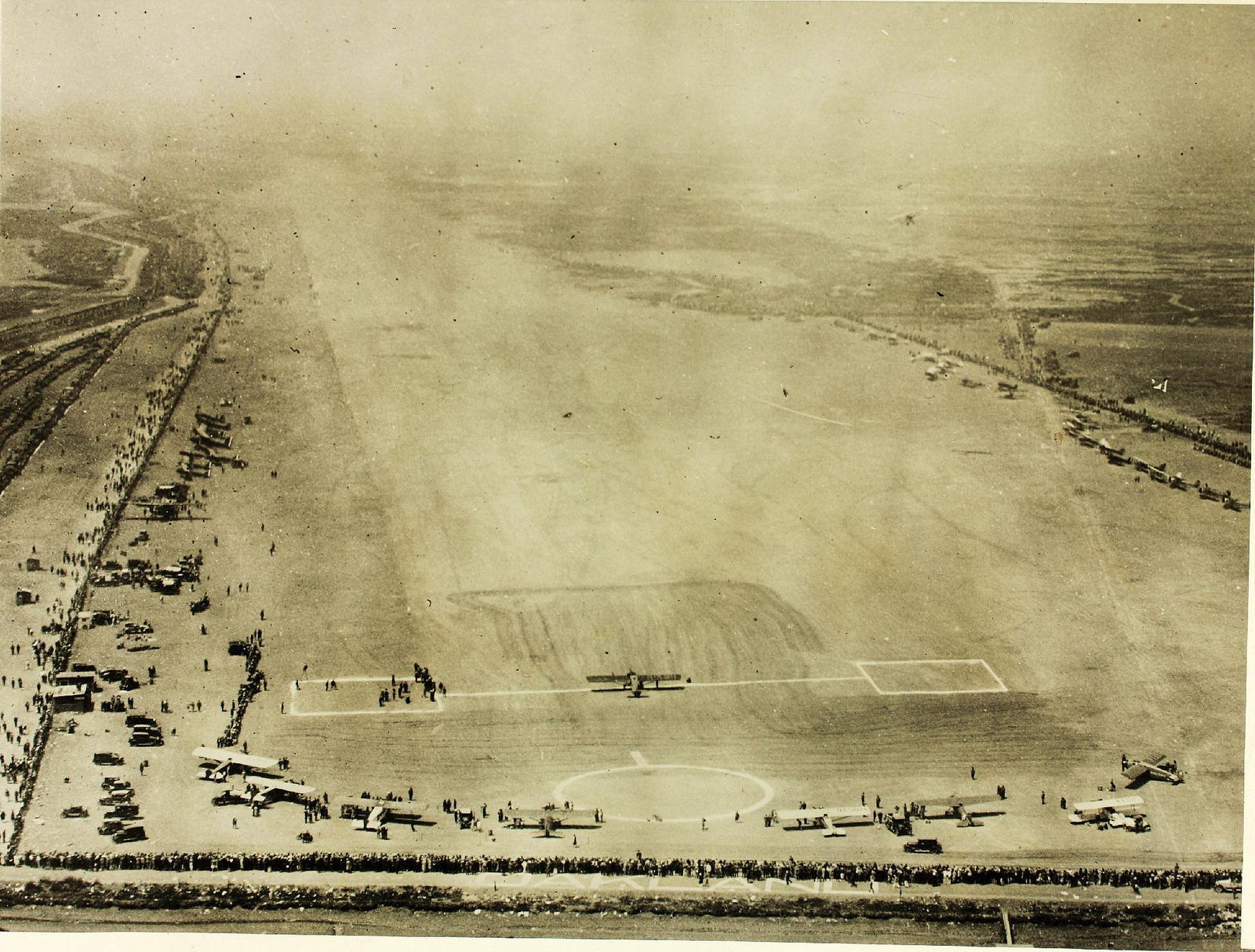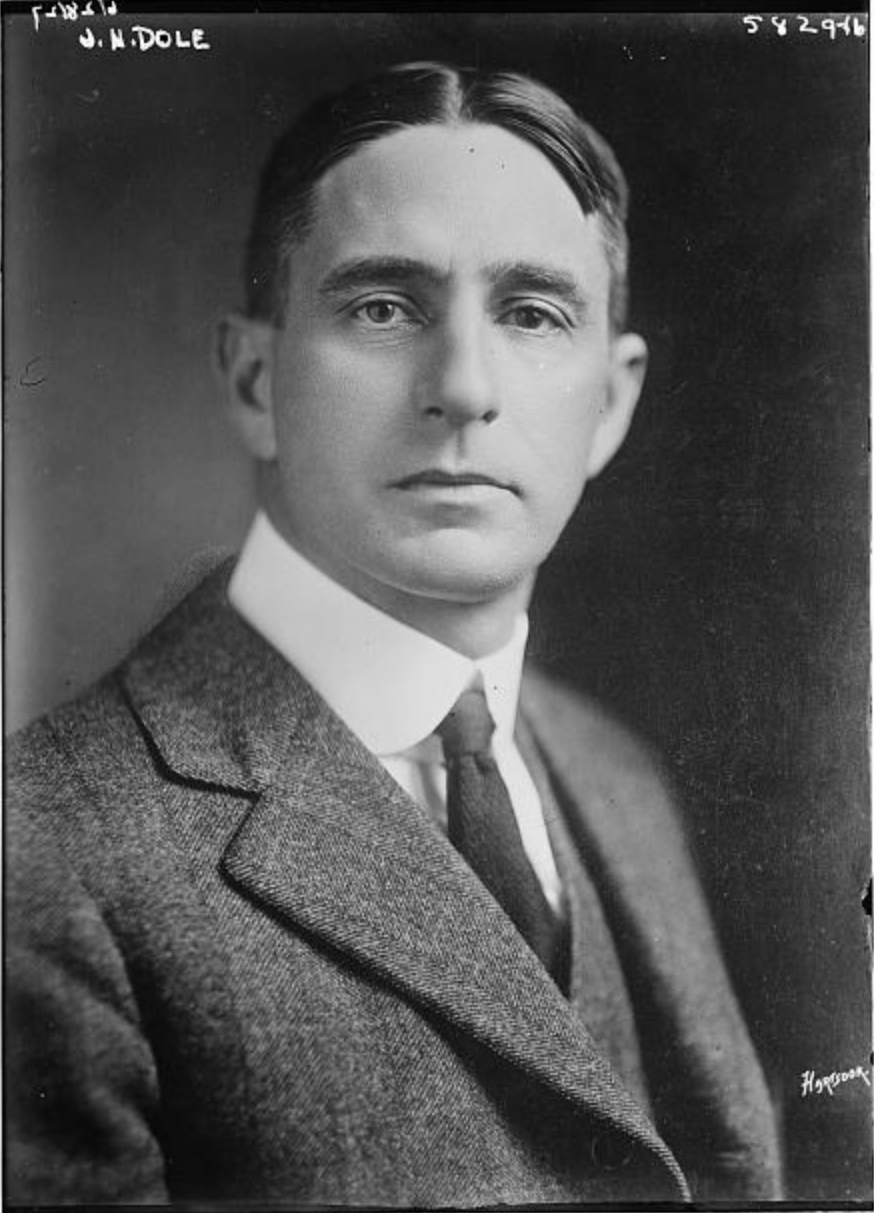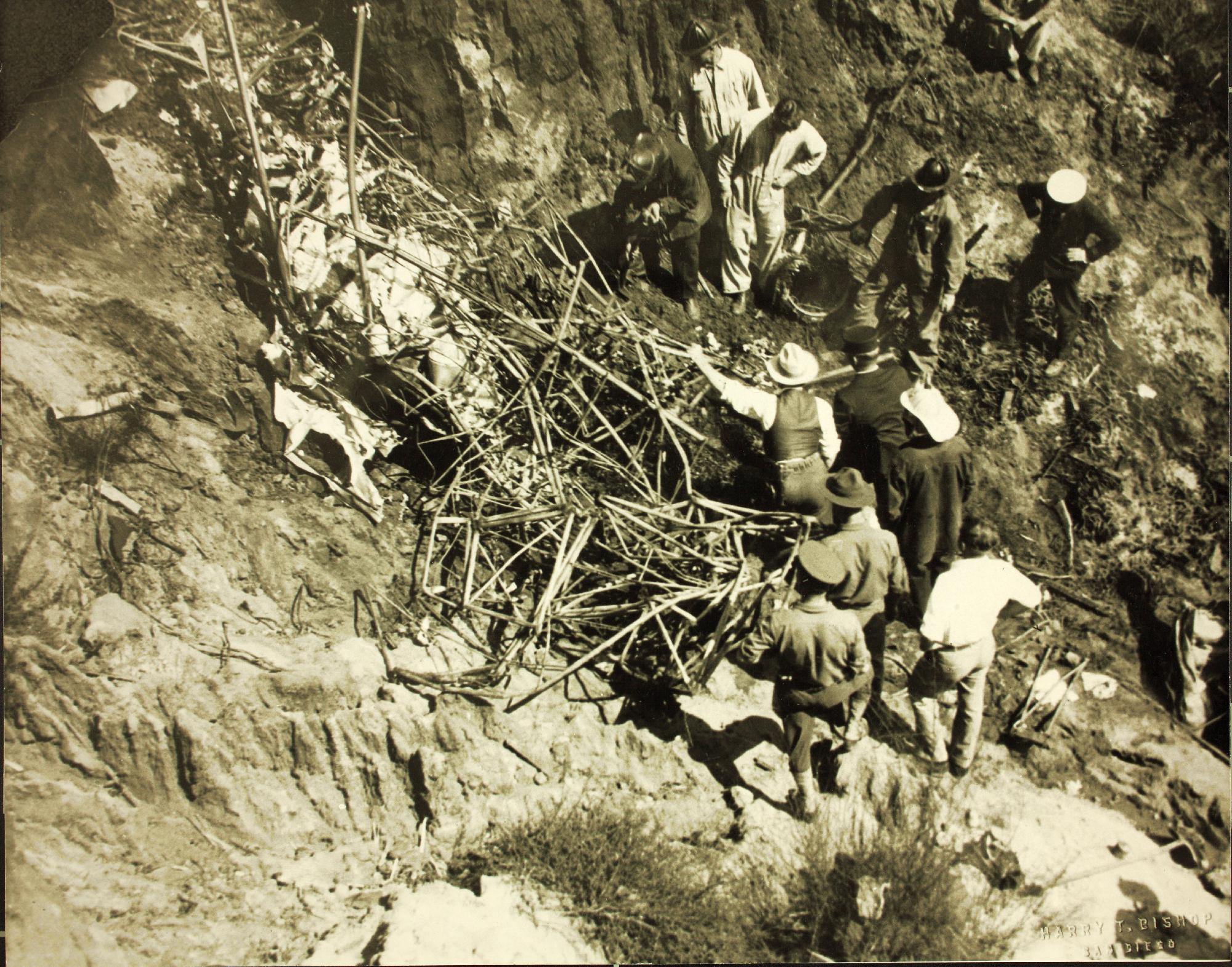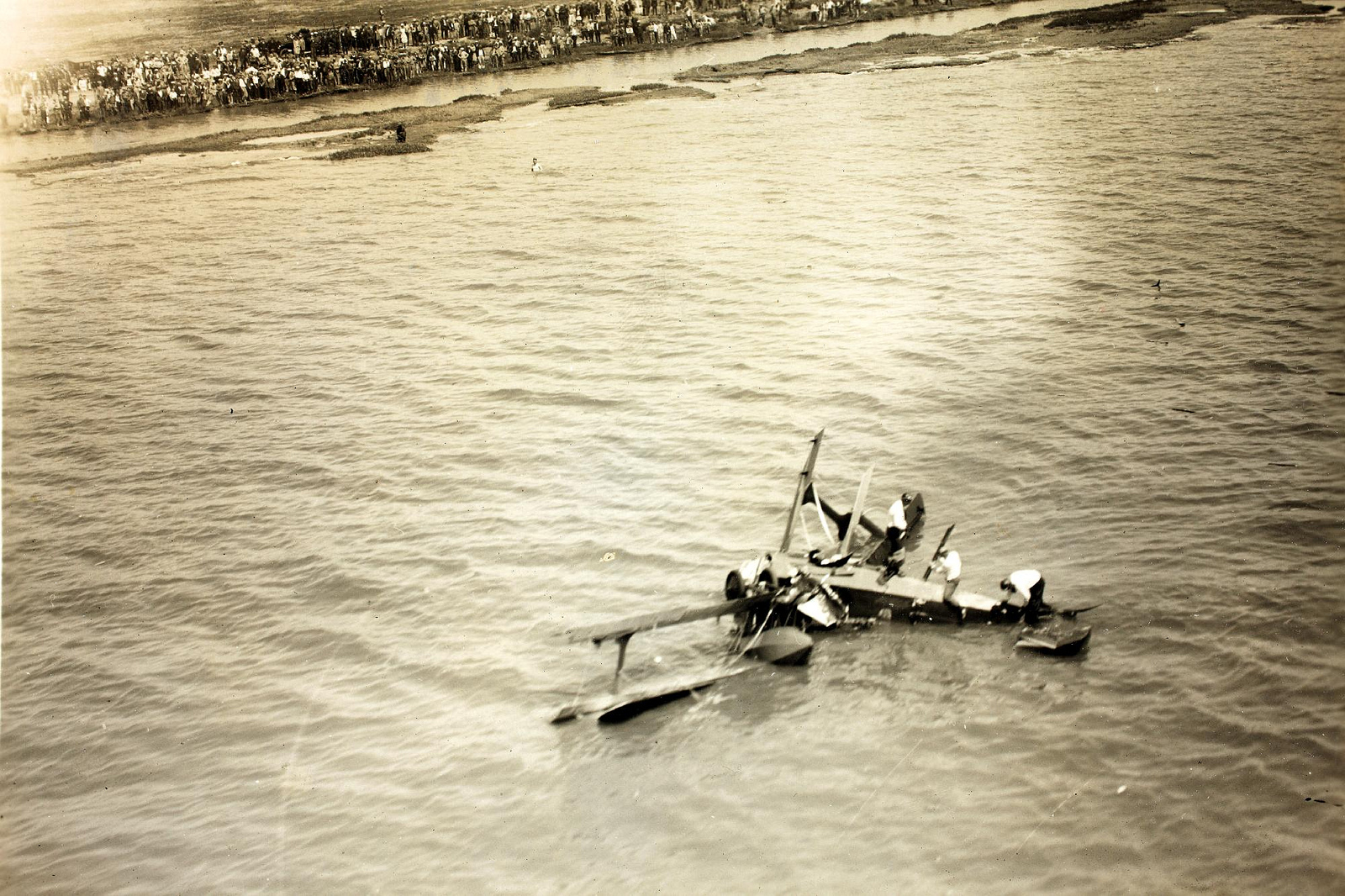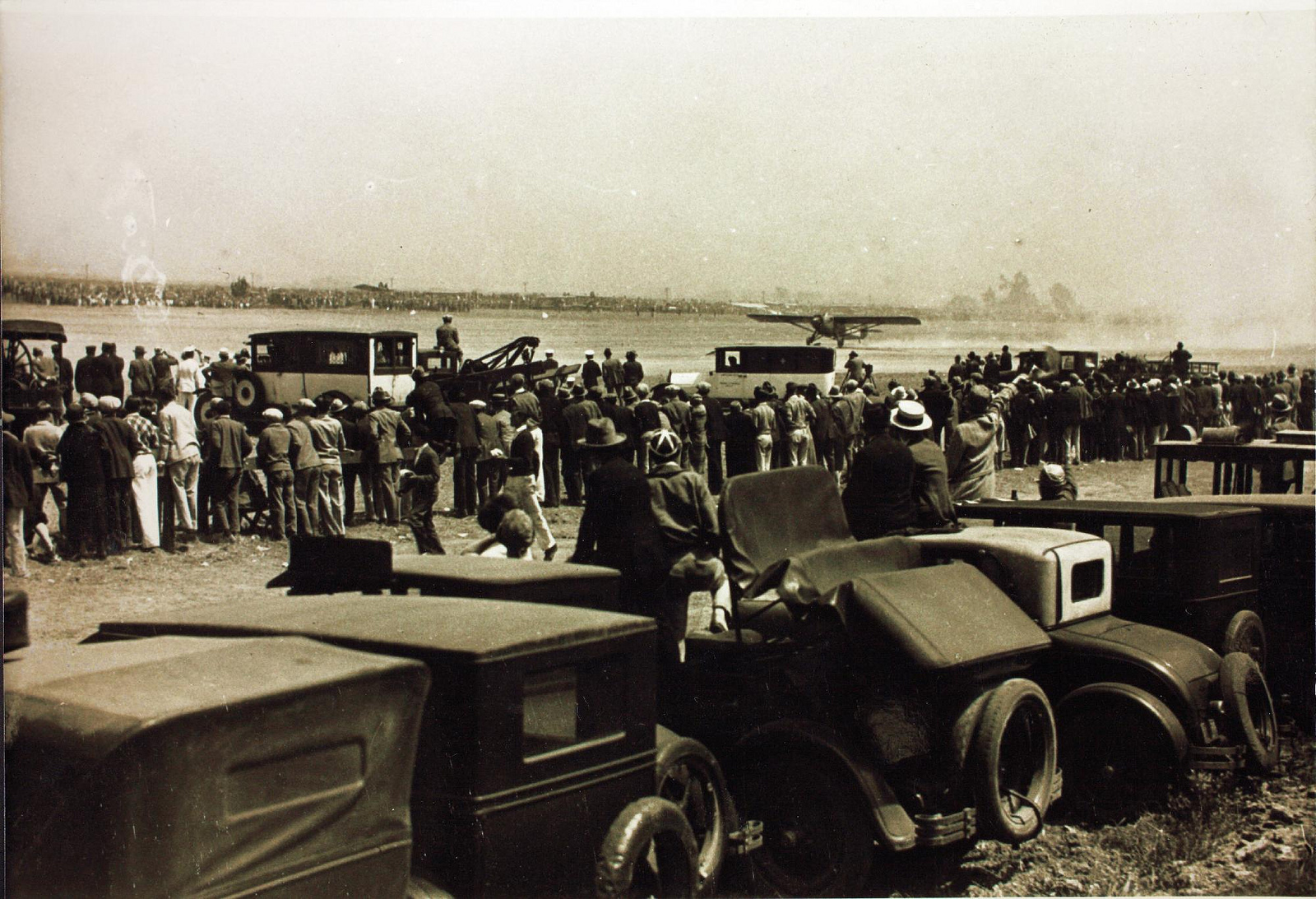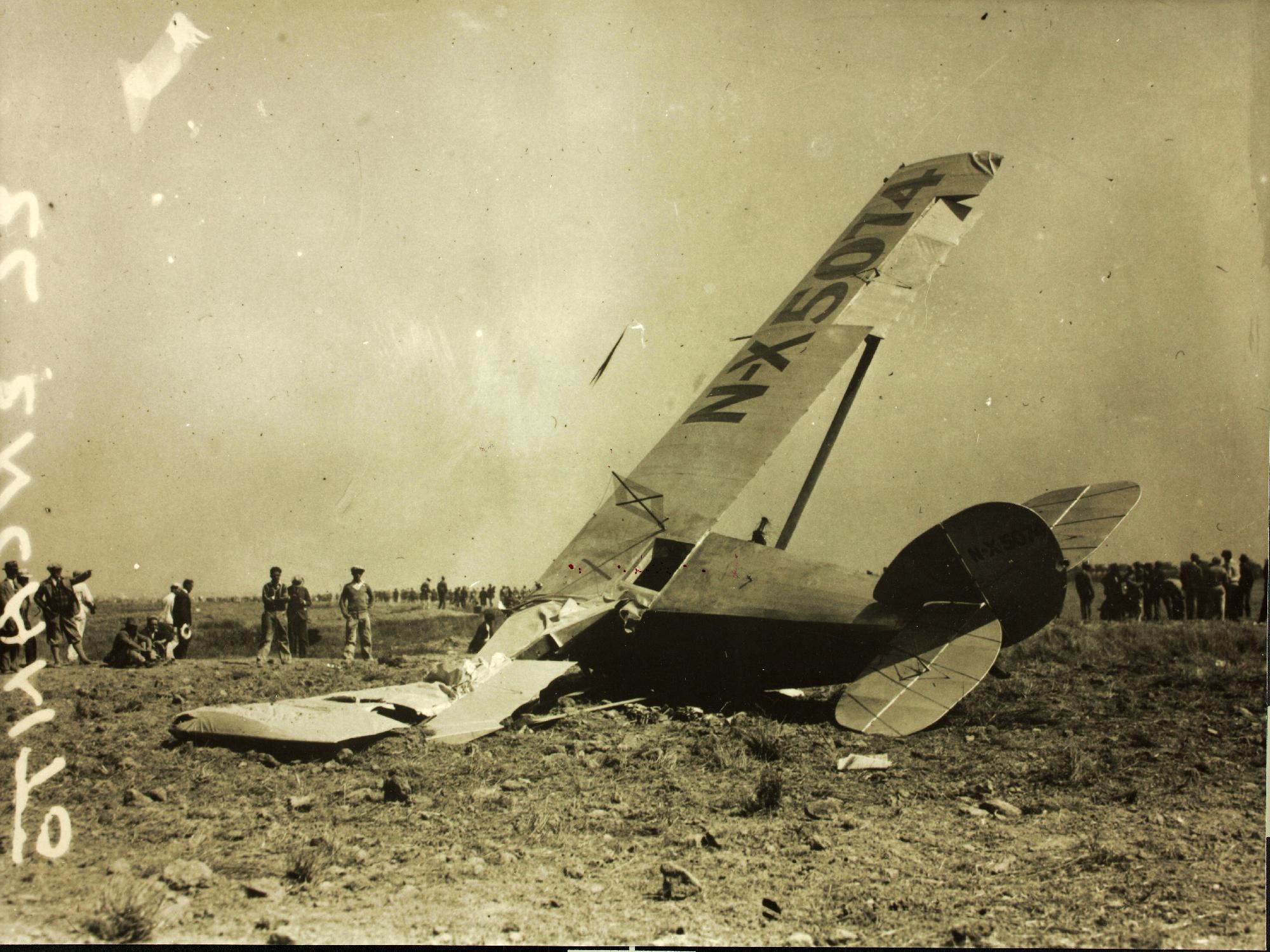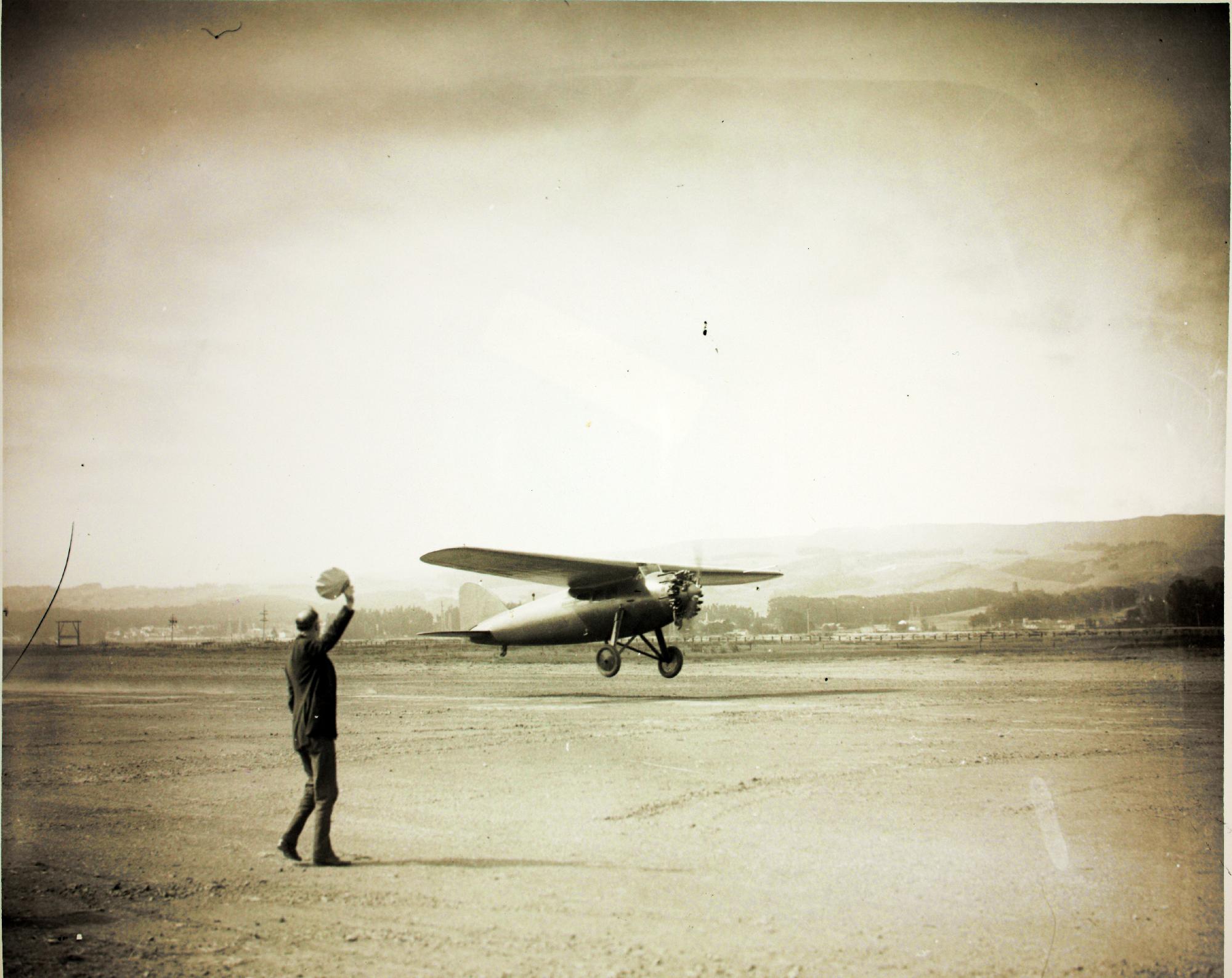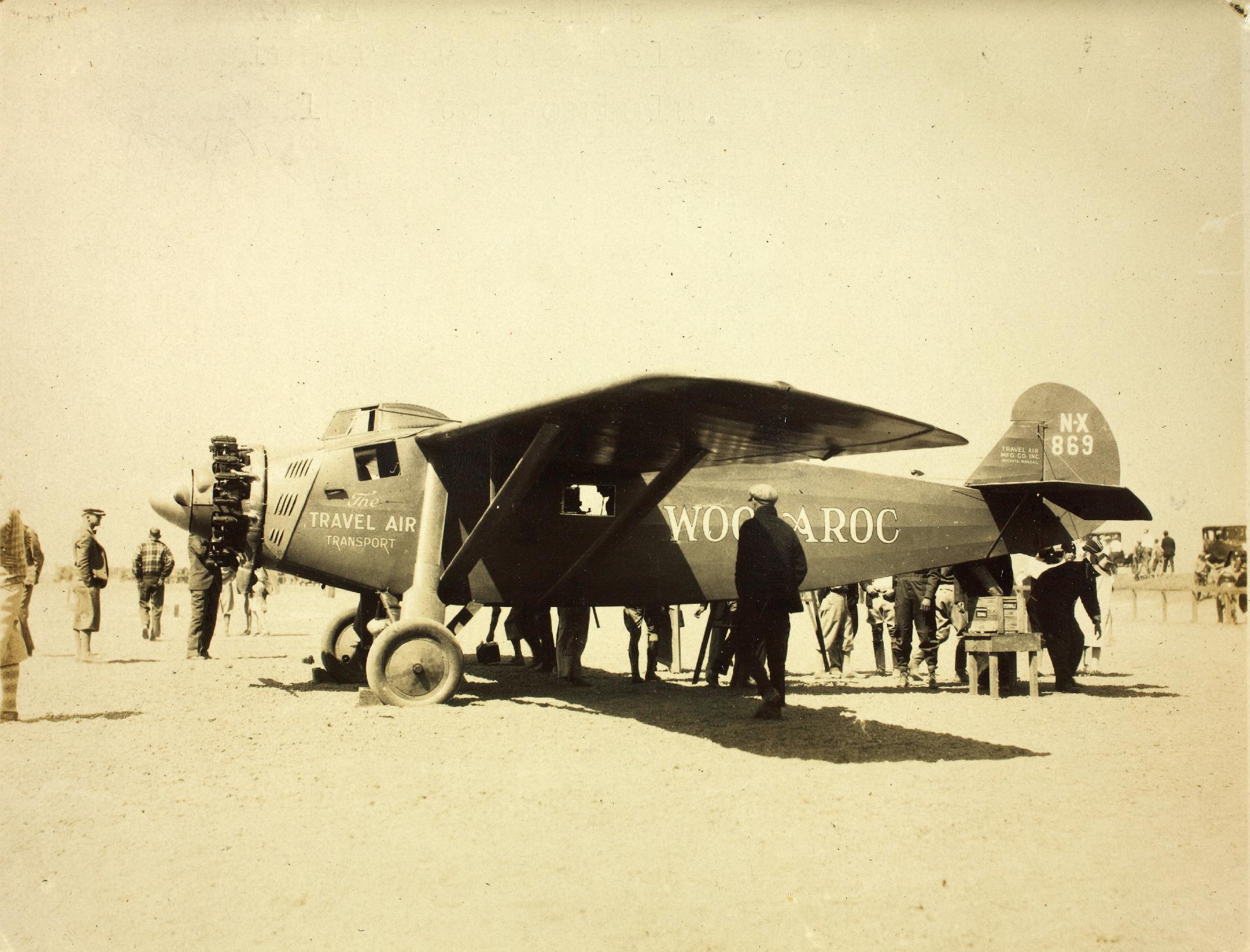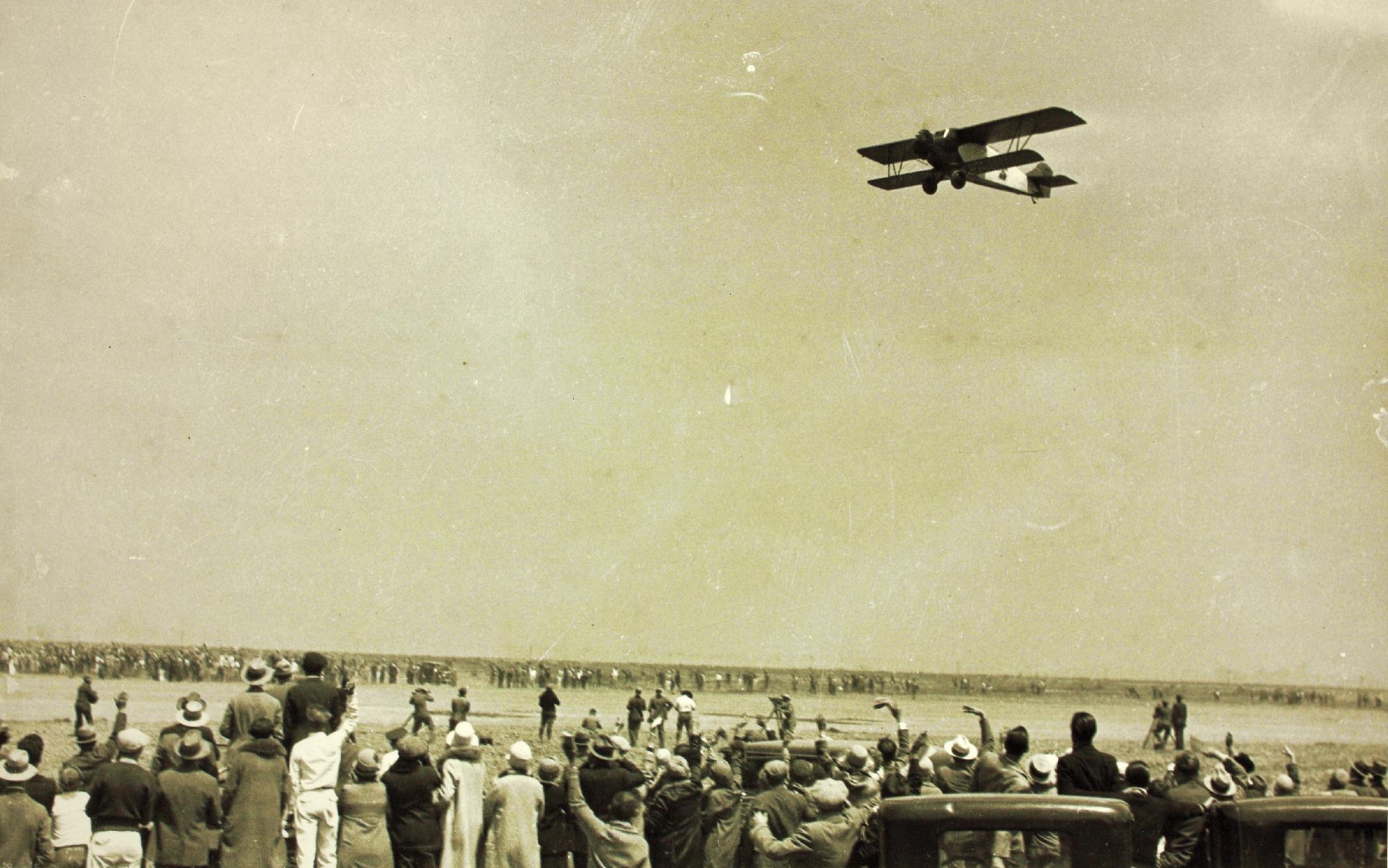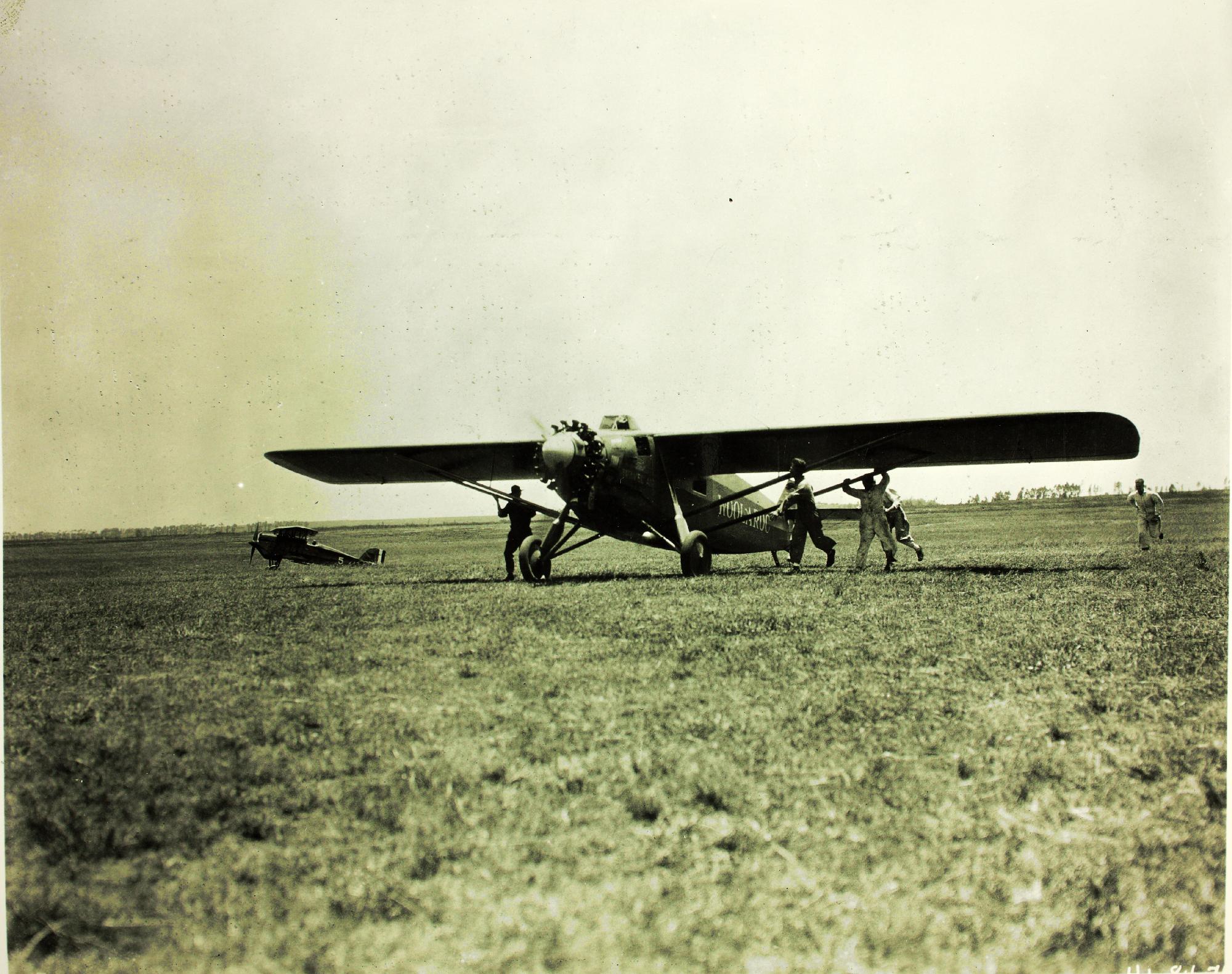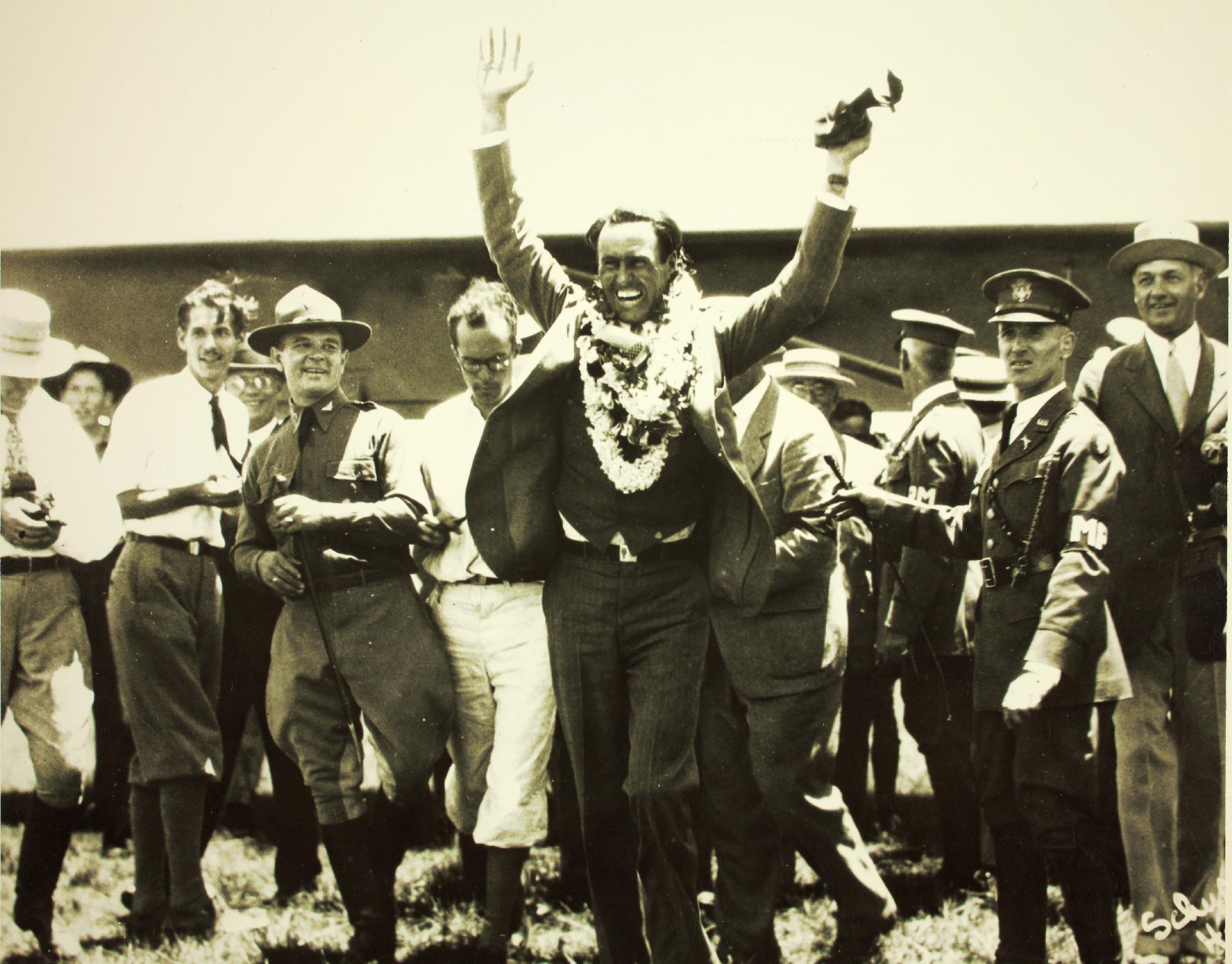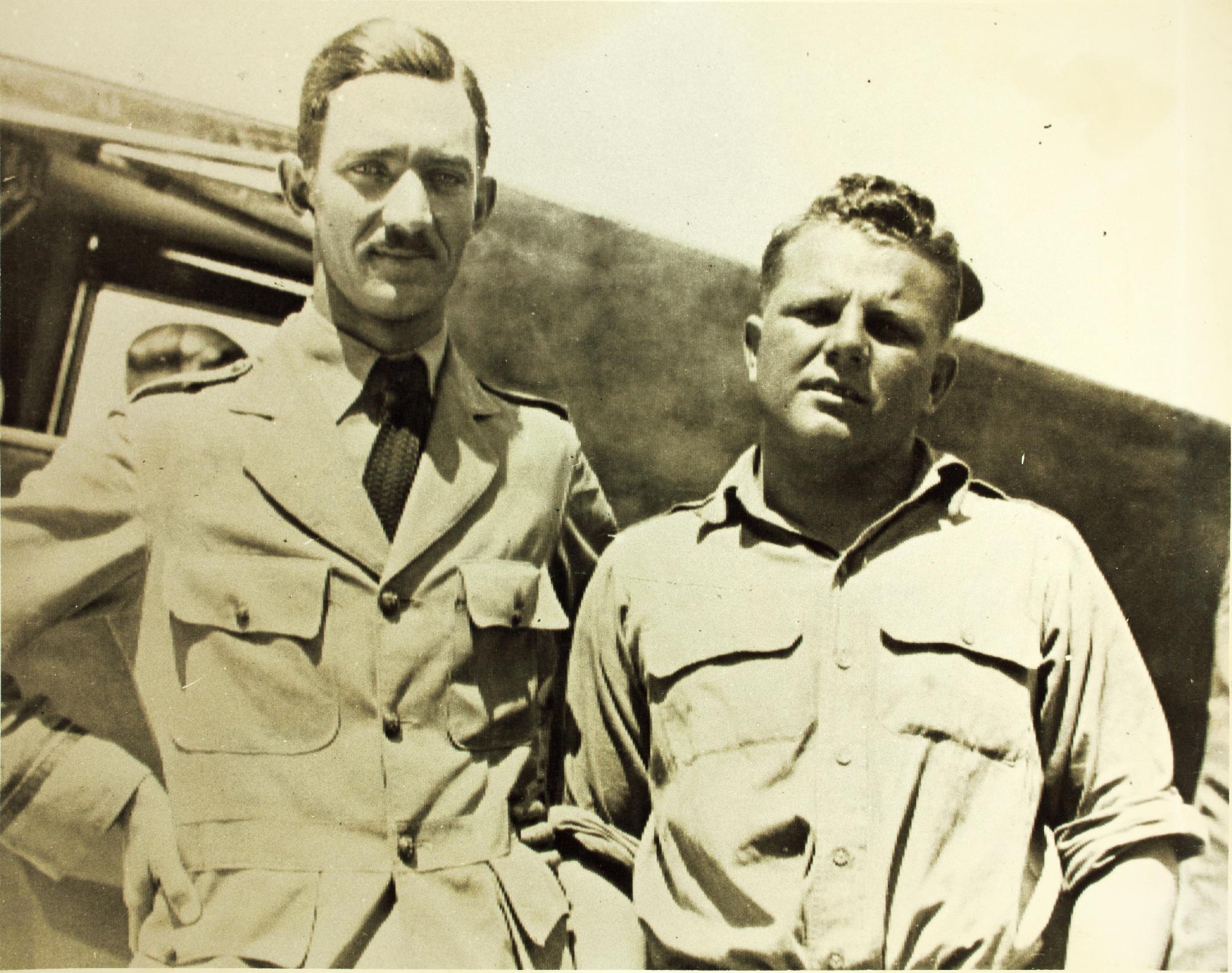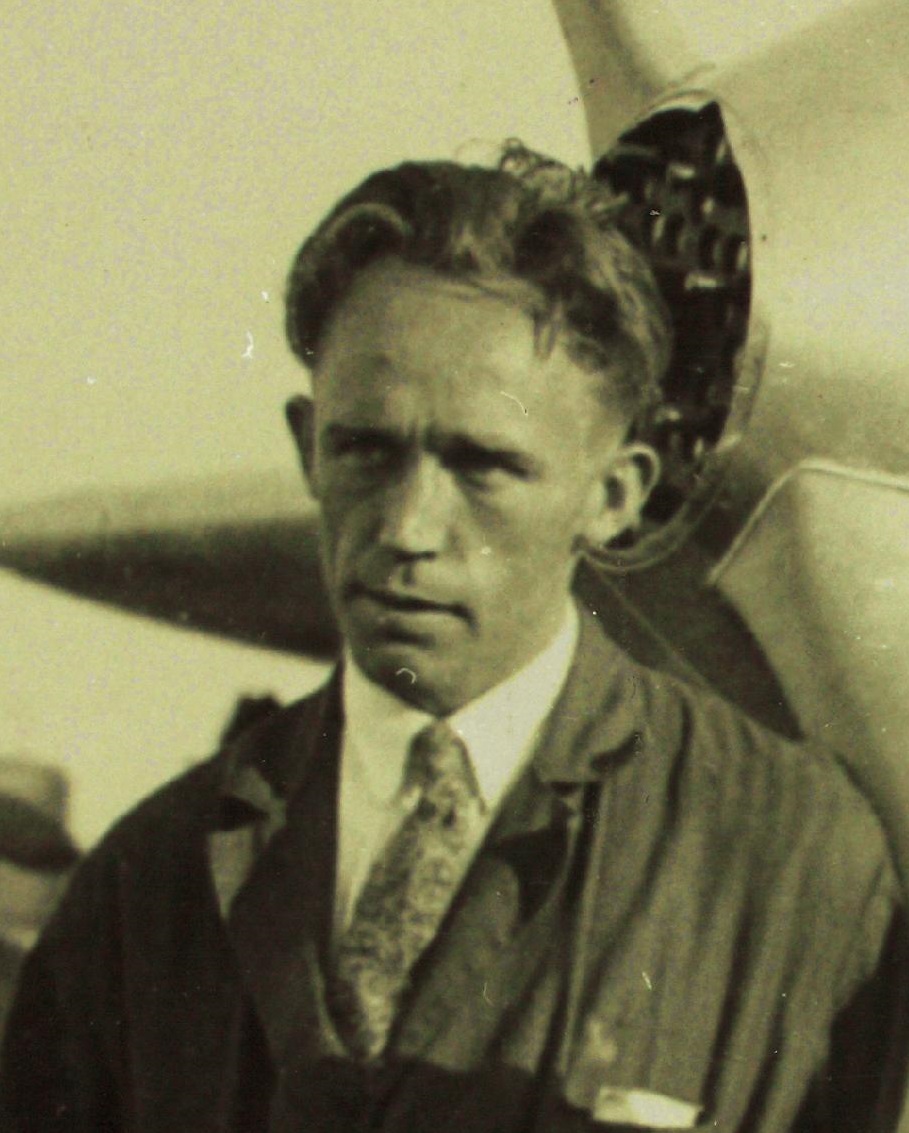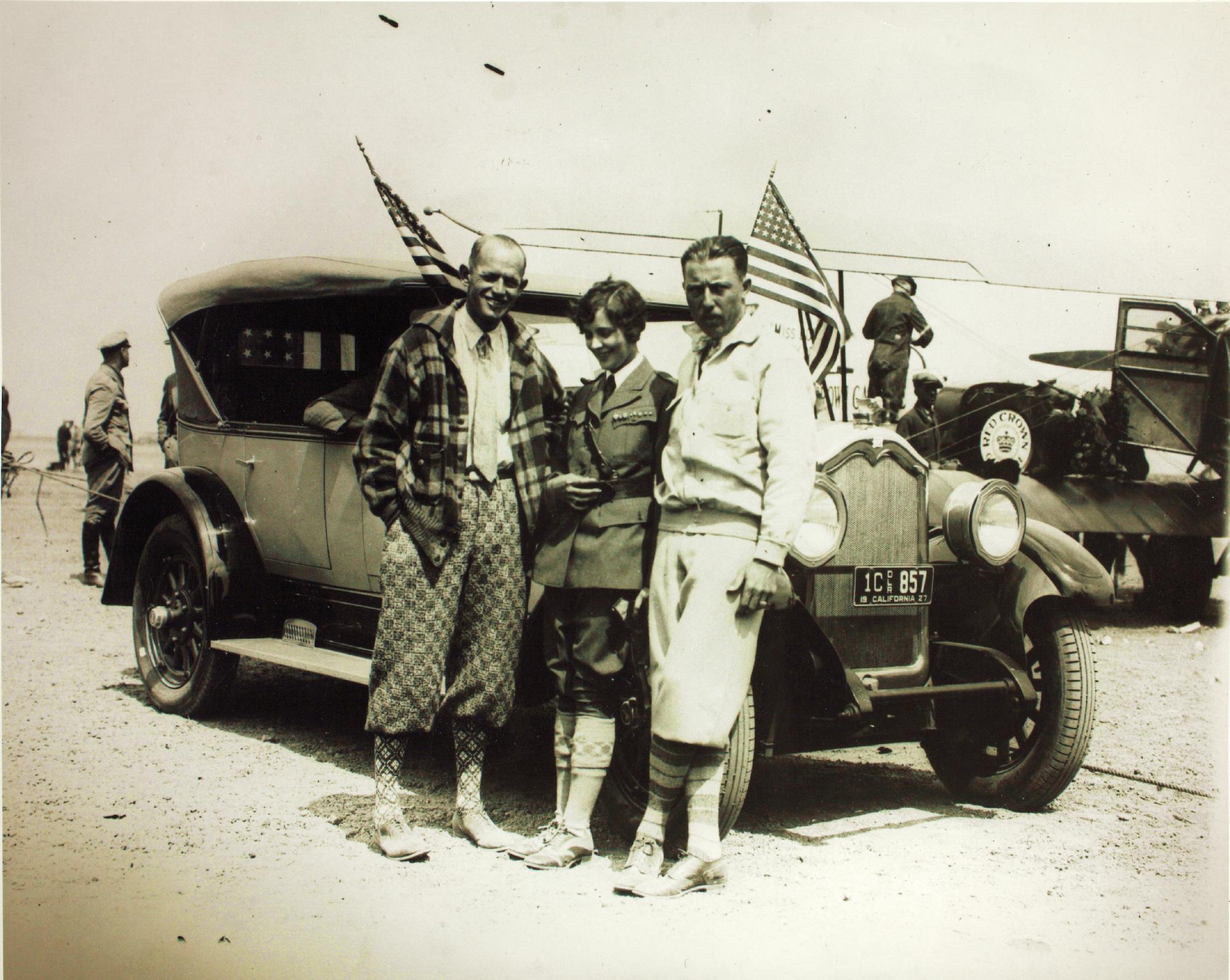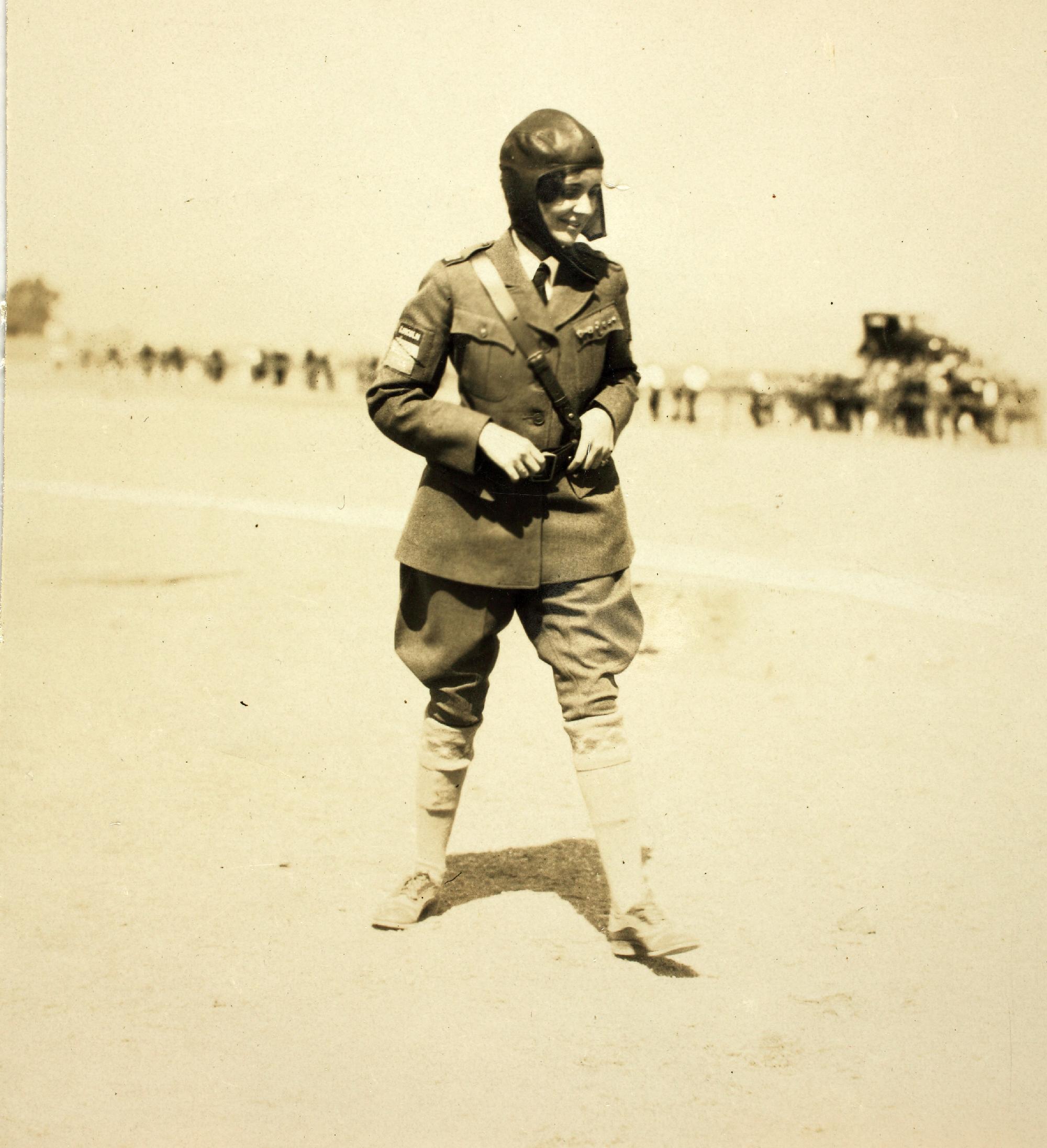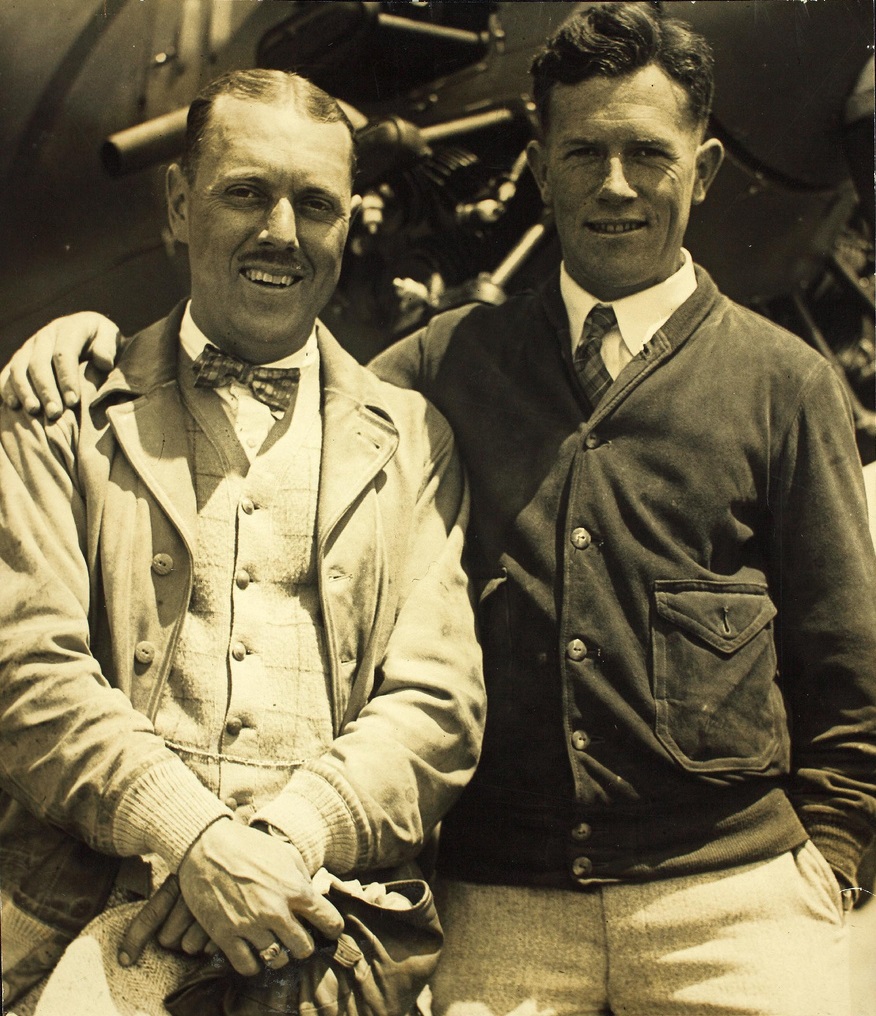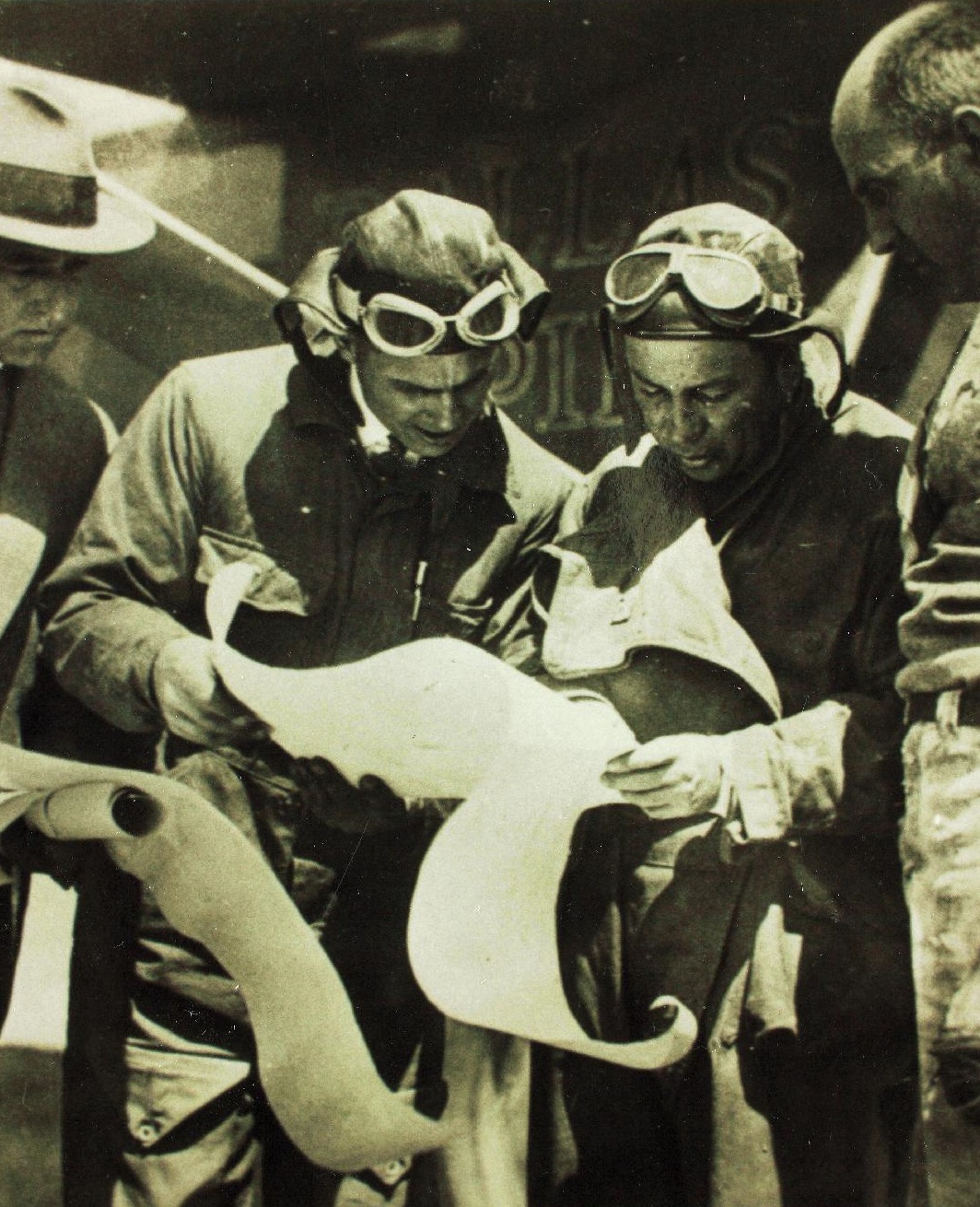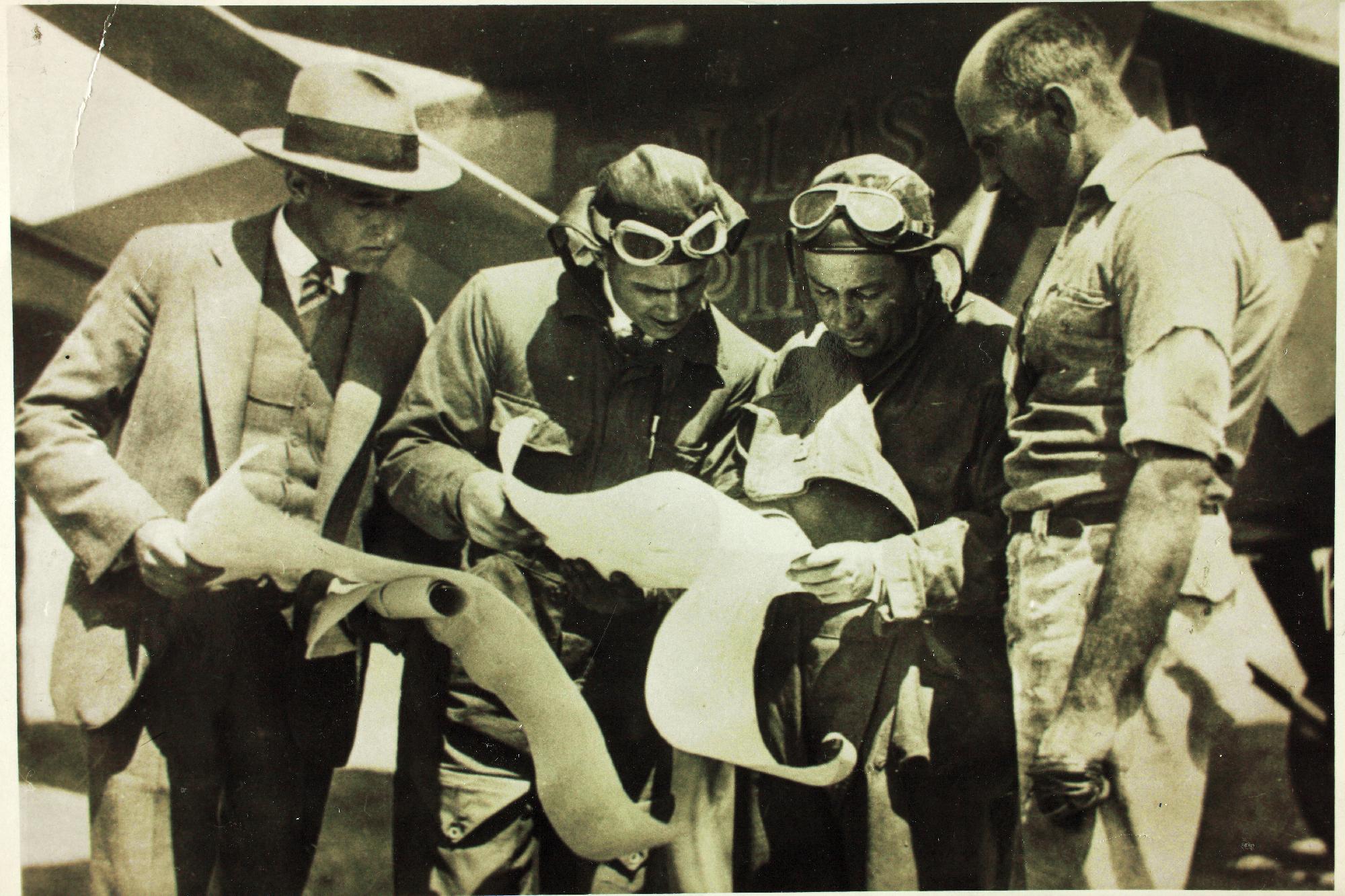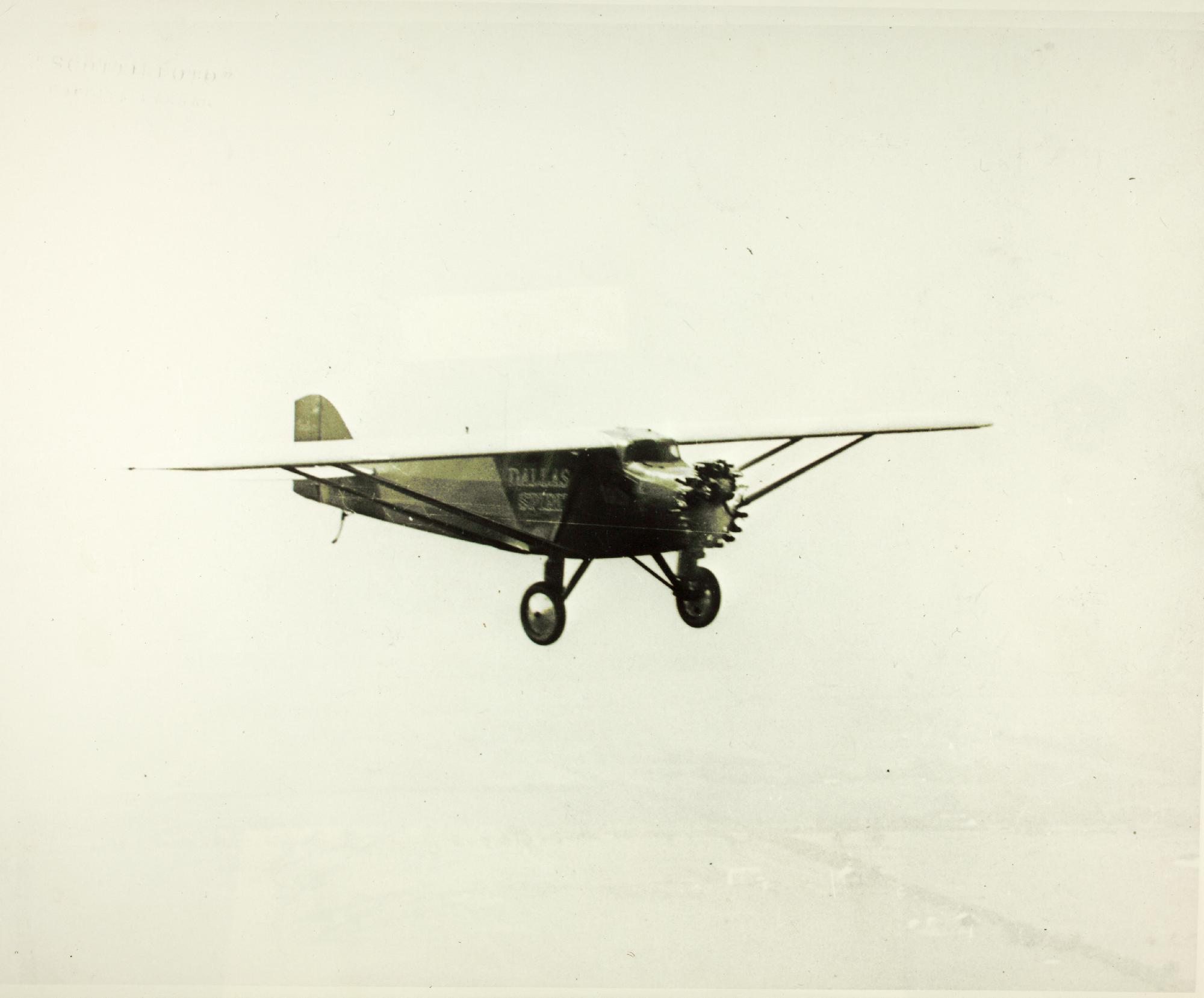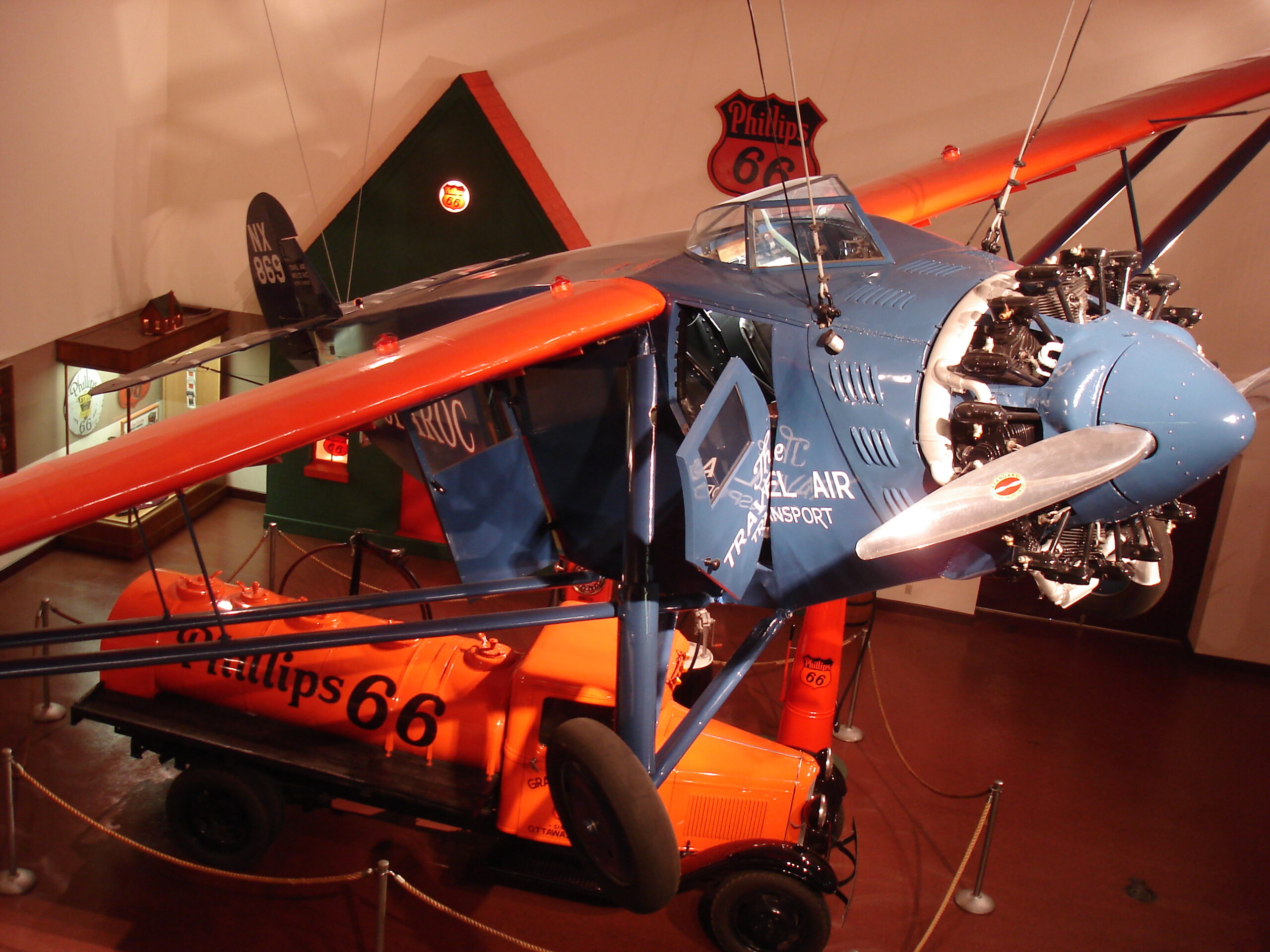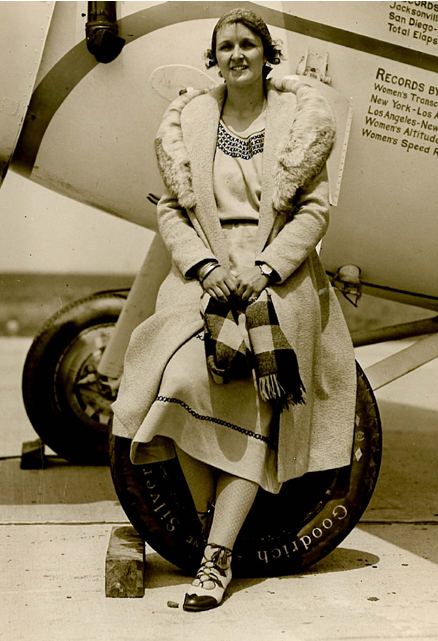
14 February 1932: Taking off from Floyd Bennett Field, Ruth Rowland Nichols flew Miss Teaneck, a Lockheed Vega 1 owned by Clarence Duncan Chamberlin, to an altitude of 19,928 feet (6,074 meters). This set a National Aeronautic Association record.
The airplane’s owner had flown it to 19,393 feet (5,911 meters) on 24 January 1932.
A contemporary newspaper reported:
RUTH NICHOLS SETS NEW ALTITUDE RECORD
Ruth Nichols’ flight in a Lockheed monoplane powered with a 225 horsepower Packard Diesel motor to an altitude of 21,350 feet Friday had been credited to the Rye girl unofficially as a new altitude record for Diesel engines. A sealed barograph, removed from the plane, has been sent to Washington to the Bureau of Standards to determine the exact altitude figure.
—The Bronxville Press, Vol. VIII, No. 14, Tuesday, February 15, 1932, Columns 1 and 2
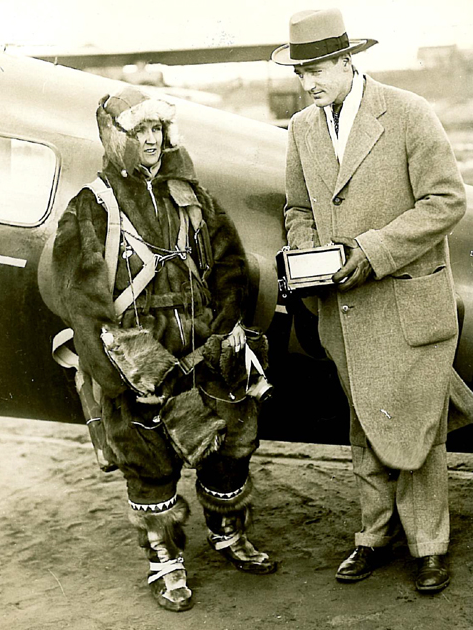
RUTH NICHOLS SETS AIR MARK
Aviatrix Beats Chamberlain [sic] Altitude Record
Sails 21,300 Feet High in Flying Furnace
Temperature Found to Be 15 Deg. Below Zero
NEW YORK, Feb. 14. (AP)—Ruth Nichols, society aviatrix, flew Clarence Chamberlin’s “Flying Furnace” to a new altitude record, on the basis of an unofficial reading of her altimeter.
When she landed it registered 21,300 feet, while Chamberlin’s official record for the Diesel-motored craft was 19,363 feet.
Miss Nichols took off at 4:15 p.m. from Floyd Bennett airport and landed an hour and one minute later after an exciting flight.
She encountered temperatures of 15 degrees below zero, she said, and at 20,000 feet two of her cylinders blew out. At that height, too, she was forced to the use of her oxygen tank.
ENJOYED HER FLIGHT
In addition to the sealed barograph, which was taken from the plane at once to be sent to Washington for official calibration, Miss Nichols had three altimeters, two of which went out of commission in the upper atmosphere. The unofficial reading was taken from the third altimeter.
Despite her crippled engine and the fact that she had no brakes, she made a perfect landing and announced she had enjoyed the flight.
He unofficial altimeter reading was greater than that of Chamberlin after his flight and it is believed the official calibration would establish the new record for planes of this type.
ADVISED BY CHAMBERLIN
Chamberlin was present as her technical advisor, and he gave last-minute instructions as she stepped into the cockpit, wearing a heavy flying suit, lined boots, and a purple scarf wound about her head instead of a helmet.
The plane carried 13 gallons of furnace oil, and one tank of oxygen. The regular wheels were changed smaller, lighter ones before the flight.
Miss Nichols hold several records and has reached an altitude of 28,743 feet in a gasoline plane.
—Los Angeles Times, Volume LI. Monday, 15 February 1932, Page 3 at Column 3
Ruth Nichols’ Flight Record Confirmed
Rye, N. Y., March 2—Miss Ruth Nichols, aviatrix, received notice from Washington today that her altitude flight from Floyd Bennett Airport, Barren Island, on Feb. 14 last in a Diesel-powered airplane to a height of 19,928 feet has set a new American Altitude record for that type of plane.
—Brooklyn Daily Eagle, Vol. XCI, No, 61, Page 2, Column 2
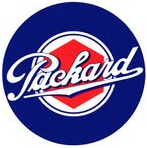
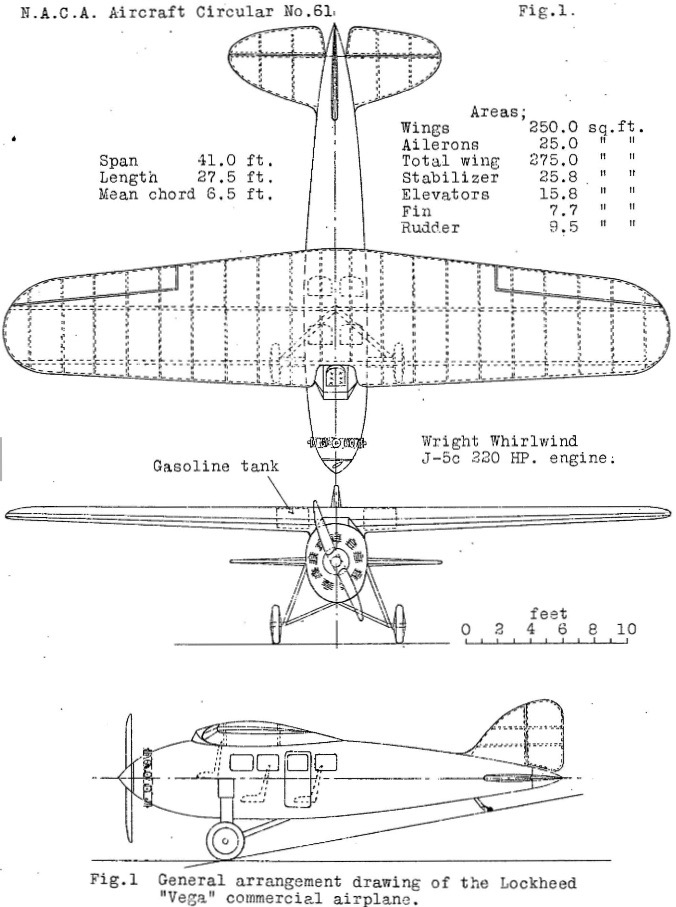
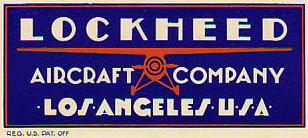
The Vega used a streamlined monocoque fuselage made of strips of vertical-grain spruce pressed into concrete molds and bonded together with cassein glue. These were then attached to former rings. The wing and tail surfaces were fully cantilevered, requiring no bracing wires or struts to support them. They were built of spruce spars and ribs, covered with 3/32-inch (2.4 millimeters) spruce plywood.
The Lockheed Vega 1 was flown by a single pilot in an open cockpit and could carry up to four passengers in the enclosed cabin. It was 27.5 feet (8.38 meters) long with a wingspan of 41.0 feet (12.50 meters) and height of 8 feet, 6 inches (2.59 meters). The total wing area (including ailerons) was 275 square feet (25.55 square meters). The wing had no dihedral. The leading edges were swept slightly aft, and the trailing edges swept forward. The Vega 1 had an empty weight of 1,650.0 pounds (748.4 kilograms) and a gross weight of 3,200 pounds (1,452 kilograms).
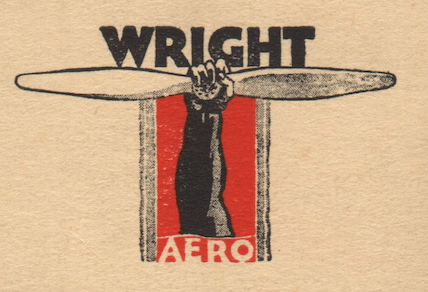
The Vega had a cruising speed of 110 miles per hour (177 kilometers per hour) with the engine turning 1,500 r.p.m., and a top speed of 135 miles per hour (217 kilometers per hour)—very fast for its time. The airplane had a rate of climb of 925 feet per minute (4.7 meters per second) at Sea Level, decreasing to 405 feet per minute (2.1 meters per second) at 10,000 feet (3,048 meters). Its service ceiling was 15,900 feet (4,846 meters), and the absolute ceiling was 17,800 feet (5,425 meters). The airplane had a fuel capacity of 100 gallons (379 liters), giving it a range of 1,000 miles (1,609 kilometers) at cruise speed.
Twenty-eight Vega 1 airplanes were built by Lockheed Aircraft Company at the factory on Sycamore Street, Hollywood, California, before production of the improved Lockheed Vega 5 began in 1928 and the company moved to its new location at Burbank, California.
The techniques used to build the Vega were very influential in aircraft design. It also began Lockheed’s tradition of naming its airplanes after stars and other astronomical objects.
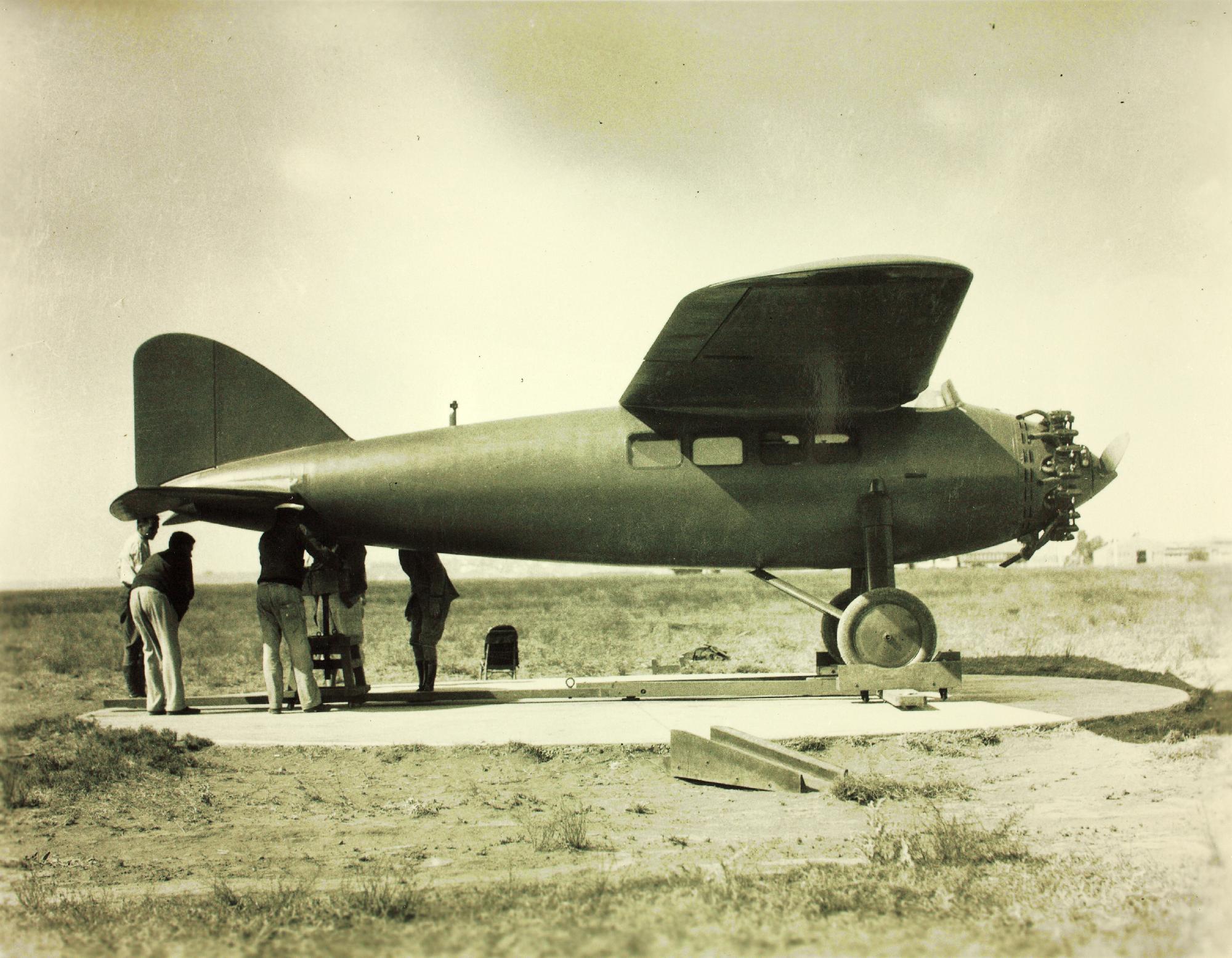
© 2021 Bryan R. Swopes
